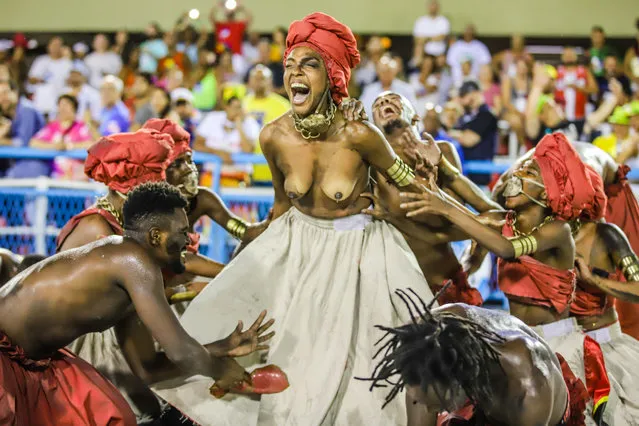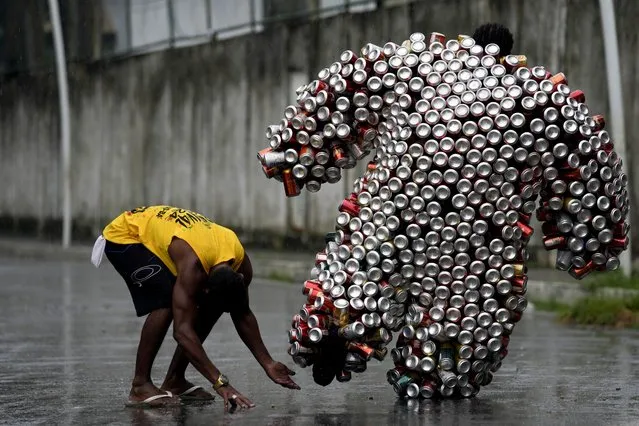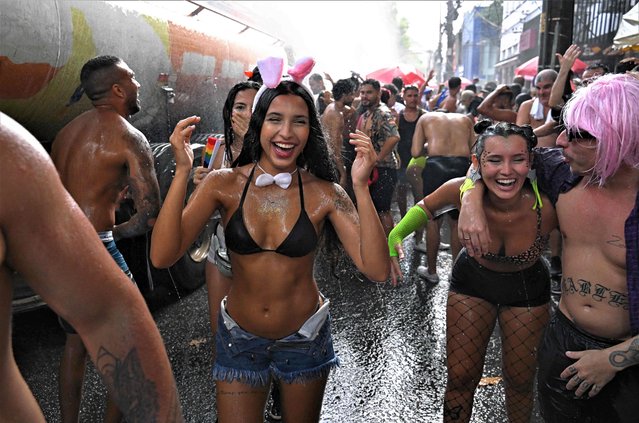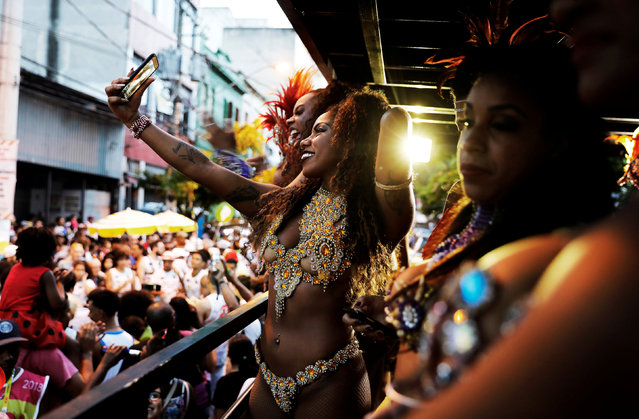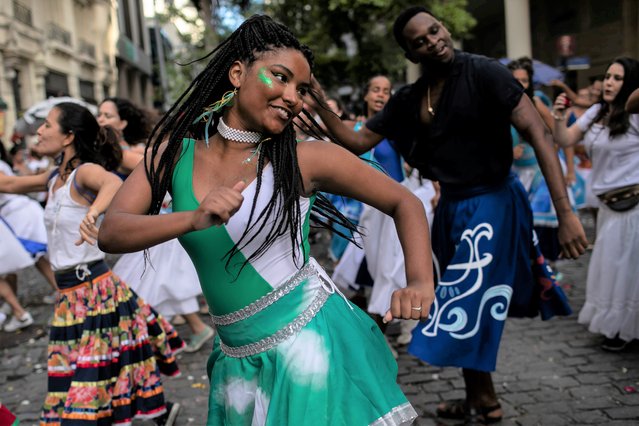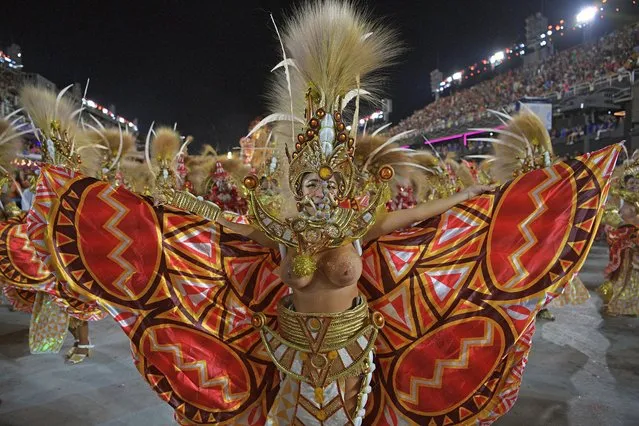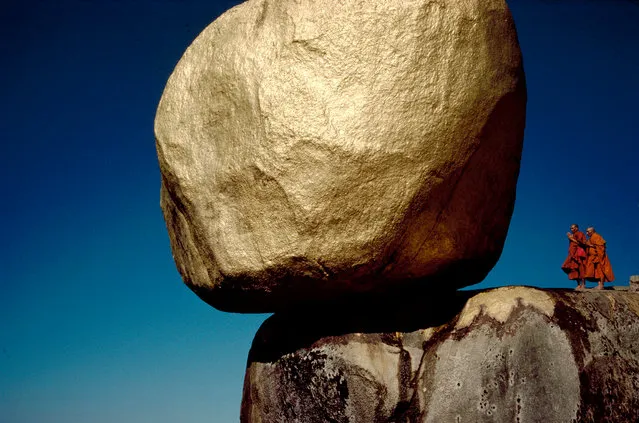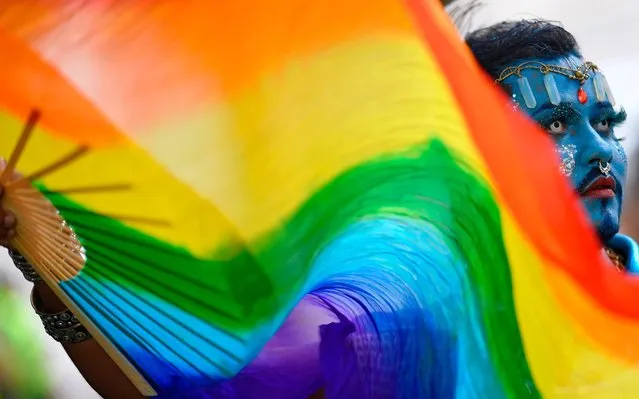
A member of the Pena de Pavao de Krishna traditional carnival group, which celebrates Indian deities, performs in Belo Horizonte, Brazil, on February 23, 2020. The group added more accelerated northern rhythms to its repertoire in a way to raise awareness of the importance of the Amazon rainforest and the worrying rates that it is burning at. (Photo by Douglas Magno/AFP Photo)
26 Feb 2020 00:07:00,post received
0 comments

